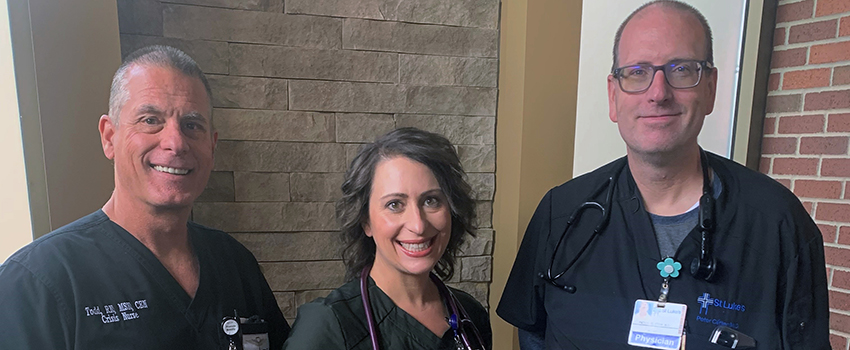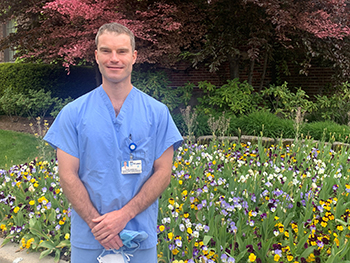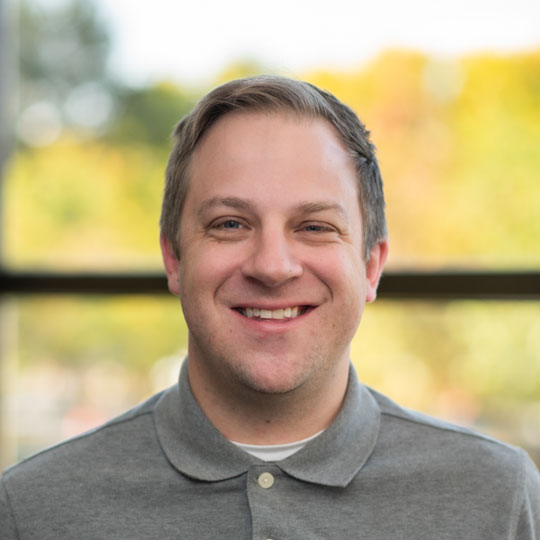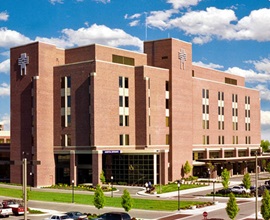Life-saving measures from St. Luke’s team were years in the making, and part of the job

To the clinical staff members who worked together to help save Beverly Williams’ life at St. Luke’s Meridian, they were just doing their normal, everyday jobs.
But to Bill Williams, Beverly’s husband, their actions on April 21 to identify, treat and operate on a pulmonary embolism was nothing short of “an answer to prayer,” as he called it.
It was a special combination of frontline workers who had the right training, experience and attitude to get the best outcome for Beverly, part of a system years in the making her surgeon saw come to fruition.
“Because of them, I got to bring my wife of 60 years home again instead of planning a funeral,” Bill Williams said.
Noted crisis nurse Todd Bloomer: “What she went through would have killed most people. I’ve been a nurse for 25 years, seen thousands of patients, but she’ll be one that sticks with me.”
Beverly and Bill live in McCall, and that’s where the story begins. Beverly was experiencing chest pains and went to the emergency department at St. Luke’s McCall. She promptly was sent via ambulance to Meridian on April 20.
RN Tarah Herdegen was taking care of Beverly the following day in Telemetry, closely observed her and noted she had taken a turn for the worse. Herdegen tested to see if the chest pain was heart or lung-induced, and quickly ascertained it was not muscular.
Herdegen immediately notified Dr. Peter Cliften, the attending hospitalist, with her concerns. She noted that Dr. Cliften “is fabulous at listening to nurses and trusting judgment. He encourages nurses to work to the top of their scope of practice and often educates throughout his shift to empower nurses.”
Cliften agreed with the assessment and the crisis team was notified, a CT scan confirming a pulmonary embolism, her lungs filled with clots.
“Tarah is great at speaking up, asking for opinions if she’s something wrong,” Bloomer said.
Added Herdegen: “This is what we do daily. As nurses, we are often the first to see a patient’s condition change. We reached out and the team approach that is so amazing here at St. Luke’s did what we always do: We worked together to get the patient help.”

The processes to take care of Beverly, along with getting her promptly in for surgery, was long in the works for Dr. Tyler Harris, who performed her procedure over three hours, removing, as Bill said, “enough clots to fill a coffee mug.”
Harris, who specializes in interventional radiology, said part of why he enjoys it so much is that you can both see the problem and try to fix it. Before operating, Harris initiated a PE response team call with Dr. Cliften, pulmonologist Dr. William Dittrich and fellow interventional radiologist Dr. Sean Carr.
Initially, placing a filter in her inferior vena cava was considered, but the team decided to try to remove the clots via thrombectomy. It was an honest, difficult conversation with the Williamses, but a decision they agreed with.
“I had to be upfront about the risks, putting tubes into the right part of her heart almost as thick as your finger, make hairpin turns around the valves,” Harris said. “We don’t normally do it unless we have to, only a handful a year in the lungs (in Boise) … to my knowledge, it was the first we’ve done in Meridian.”
Harris was able to clear nearly all of the clots on her right side, where the majority were located, and saw Beverly improved greatly. She spent the next week recuperating before she was able to return home.
It was the result of something Harris had long prepared for, setting up both Boise and Meridian to handle an emergent thrombectomy. Early in his career, he saw complications related to pulmonary embolisms, and it prompted him to put together a PE response team to be a resource for other physicians and to have a more uniform threshold for intervention. By 2018, he had that system in place at St. Luke’s.
About four years later, it paid off in saving Beverly Williams’ life.
“This was an incredible case using some new and advanced techniques that Dr. Harris has pioneered at St. Luke’s for the treatment of life-threatening pulmonary embolism,” Dr. Carr said.
Said Harris: “It’s an ongoing collaboration, always improving the tools and mechanisms we use, but it’s remarkable how consistently we are on the same page. Most people have that case that inspires them to do something and you have those that reinforce why you do it … the ones like her make it all worth it.
“It’s such a pleasure to work with such great physicians and staff to make something like this happen.”
Having recently celebrated his wife’s 78th birthday with her, Bill Williams is relieved and thankful. It was a nerve-wracking experience, but he found the right place, full of caregivers committed, prepared and eager to help.
“Now that we know a lot more about what was going on, and the actions taken, we are totally convinced (Herdegen and Bloomer) started action rolling that saved Beverly's life,” Williams said.
“We are convinced that she would not have survived the night in the Telemetry unit, and only the skilled hands of Dr. Harris brought her back from the edge. All of the nurses, aids, technicians and doctors were wonderful, and we were extremely pleased and thankful for the very professional treatment Beverly received.”About The Author

Dave Southorn works in the Communications and Marketing department at St. Luke's.



